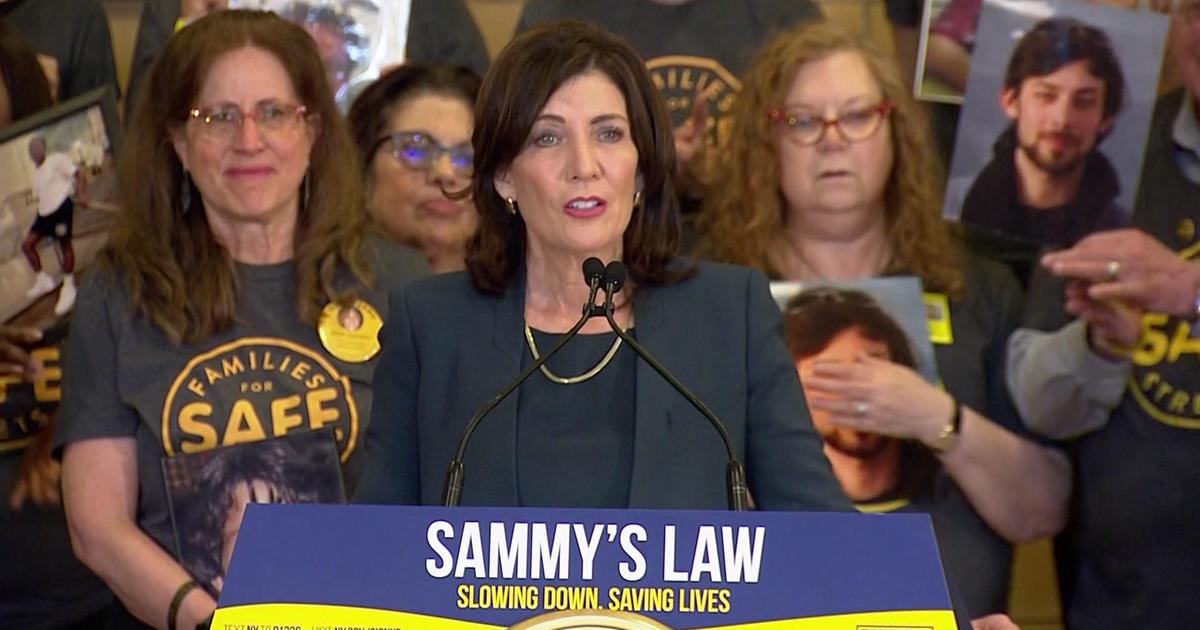As Edgy NYC Disappears, Does Its Character Go Too?
NEW YORK (AP/CBSNewYork) -- CBGB, the birthplace of punk rock, is gone. No longer can visitors to Coney Island plunk down a few coins to play the unsettling attraction called "Shoot the Freak.'' And seedy, edgy, anything-might-happen Times Square? These days, it's all but childproof.
It continues: That diner on the corner for decades--closed. The beer garden down the street--now a Starbucks. The block once home to clusters of independent businesses--thriving as a big-box store.
And last month, another piece of the old New York slipped away with the demise of the city's Off-Track Betting parlors.
It's enough to make old-school New Yorkers bristle.
Around countless corners, the weird, unexpected, edgy, grimy New York--the town that so many looked to for so long as a relief from cookie-cutter America--has evolved into something else entirely: tamed, prepackaged, even predictable.
"What draws people to New York is its uniqueness. So when something goes, people feel sad about it,'' says Suzanne Wasserman, director of the Gotham Center for New York City History at the City University of New York.
"I think that's also part of the New York character,'' she says, "that 'Things were better when ...'''
Change is constant, and few cities change faster than New York. But at what cost? Where is the line between progress and lost distinctiveness?
Raul Alvarado, a 70-year-old retired accountant, recently lost a piece of what made New York City special to him when the Off-Track Betting parlors closed.
No more smoke-filled entryways. No more Racing Forms blowing around the sidewalk. No more eruptions of cheers to make passers-by jump.
Launched in 1971, OTB was meant to undercut illegal bookies. It became the nation's largest betting operation, but was derided as dingy and seedy and drew loitering and littering complaints. The management gained a reputation for loose oversight and political patronage, and OTB was shut down last month after years of financial troubles.
"I've been playing horses for what, 30 years, maybe? It's part of your day,'' Alvarado said, closing out his account at a Manhattan parlor. "It's a little piece of the Apple.''
The debate, of course, is a legitimate and basic one--edgy vs. safe, energizing vs. prepackaged. For every argument about New York's lost pizazz, there's another about how now you can take your toddler's stroller around most of Manhattan and not be afraid of what might happen.
Still, many say there's just something about the energy of New York City--about more than 8 million people crowded into a few cramped patches of land--that will always make it something special.
"There's a pace that exists here,'' says Paul Birkett, a tourist from Darby, England, visiting the city with his wife. For him, it's about the people: "You can change the surroundings, the infrastructure, but what I've always liked about New York is the New Yorker, and that's always pretty much going to be the same.''
The couple was standing amid the hustle and bustle of Times Square, the most visible example of how New York City has changed in the recent past--particularly under Mayor Rudy Giuliani in the 1990s.
Now filled with massive signs of backlit plastic, big-name stores and casual dining, Times Square has come a long way from its days as a "GIRLS! GIRLS! GIRLS!'' haven for peep shows, sex shops, drug dealers and squeegee men.
So has the once dank home of defunct rock club CBGB, closed after the owner lost a rent fight with his landlord. Last year, a men's fashion boutique opened there.
Some may long for that edgier atmosphere, but it hasn't disappeared entirely, says Kenneth T. Jackson, a Columbia University historian and editor of The Encyclopedia of New York City.
"The people looking for strip shows can always find it,'' he says.
In comparison to other places, Jackson says, New York City has changed less and managed to hold onto more of what makes it unique--like small mom-and-pop stores that can't be found anywhere else.
"New York City has done a good job of saving some of its treasures and holding on to its character and allowing change,'' Jackson says.
If there's one thing that doesn't change in New York City, it's nostalgia. Consider Mayor Fiorello La Guardia. After his election in 1934, he worked to remove the pushcart peddlers clogging the streets of the Lower East Side, viewed by many as a problem.
Once they were gone, people missed them.
"It drove him crazy that people were just bemoaning the loss of the peddlers,'' Wasserman says.
Anthony Berlingieri understands that sentiment. The man who brought Shoot the Freak and Beer Island to the Coney Island boardwalk was outraged when he was told to leave by the new developers--and even more so when his attraction was taken down.
Zamperla USA, Coney Island's new developer, has lofty plans--new rides and roller coasters, a year-round sit-down restaurant and a sports bar. Berlingieri doesn't deny the need to improve Coney Island but laments the demise of its wild and wacky flavor.
"The things that Coney Island presented, no other amusement park in the world presented that,'' he says. "The reason we were able to compete was our uniqueness.''
Wasserman is hopeful New York will remain unique even as the places of the world start looking more alike.
"New York,'' she says, "will have a kind of individuality that isn't going to completely replicate anywhere else.''
(TM and Copyright 2011 CBS Radio Inc. and its relevant subsidiaries. CBS RADIO and EYE Logo TM and Copyright 2011 CBS Broadcasting Inc. Used under license. All Rights Reserved. This material may not be published, broadcast, rewritten, or redistributed. The Associated Press contributed to this report.)



